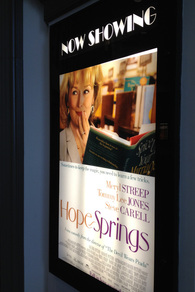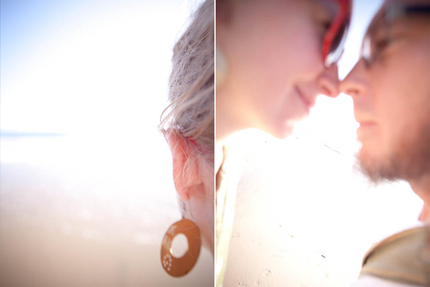 Photo by Rebekah Schott
Photo by Rebekah Schott Valentine's Day is coming.
What do you do about a Valentine Treat this year? It can be quite a decision. What does she really want? Can I make him happy this year? What gift will delight her? What gift will avoid disappointments? Tension can arise both before the special day, as well as on Valentine’s Day if expectations – especially those not expressed out loud – are not met.
Finding the best gift for Valentine’s Day can be an elusive task.
“The Office,” a old but still popular TV show that focuses on relationships, has a hilarious Feb. 14th episode where Phyllis gets everything she wants and more, including a six-foot teddy bear, while Pam sits stewing over the lack of even one gift from her boyfriend. Sure, most people like a nice gift, but what makes us really happy? Does giving a spectacular surprise on Valentine’s Day really ensure happiness for you and your partner?
Believe it or not, people do study such things and the findings might not be popular at the confectionery or florist. In their April 2010 article “Eavesdropping on Happiness,” researchers at the University of Arizona found that one of the best gifts you can give is free. Uh huh, free.
What the researchers found is a link between happiness and spending time in deep conversation. Put simply, the researchers found that people who spend more time with others and more time in deep conversations have happier lives.
The happiest participants had one third less small talk and twice as many substantive conversations. They indulged in deep conversation, not just chitchat consisting of phrases like “What’s for dinner tonight?” or “Are you going to pick up the kids, or is it my turn?”
They shared richer, more meaningful information. You might compare it to a diet of humdrum snacks versus a diet that includes tantalizing gourmet food. Which sounds better to you? The researchers concluded that
“people find their lives more worth living when examined
—at least when examined together.”
So, back to Valentine’s Day. I’ve never seen this on a top ten list of best Valentine’s gifts to give, but wouldn’t it be sweet to give “Talk Coupons” for enticing talks together?
If this sounds too foreign for you or your partner’s taste, blend such a gift into a Valentine’s Dinner by including a few enriching questions while you’re having that special dinner. (Be ready for your partner to be surprised if your usual talk is primarily of the “lite” sort!) And then do it again next week, and the week after – you get the picture.
It seems to be built into us to want to connect deeply with others. This does take work, though. Work we often don’t prioritize. It’s far too easy to get into daily patterns that leave little space for this. Juggling jobs, schedules and family is demanding. But don’t we all want to be happy? And don’t we want to have happy partners and families?
So, try moving your conversation style up from snack level
to gourmet!
Make it a habit, just like other things that become part of your regular routine.
Here are a few conversation appetizers to get you started:
- If we could get out of winter and go someplace fun, where would it be?
- What things are important to you in creating a romantic evening?
- What things in life give you the most joy?
- What is the best way for me to encourage you?
- When do you feel the most loved?
Talk together deeply.
Talk together often.
Try it, and then let me know -- what do you think?
Is it better than chocolate?




 RSS Feed
RSS Feed